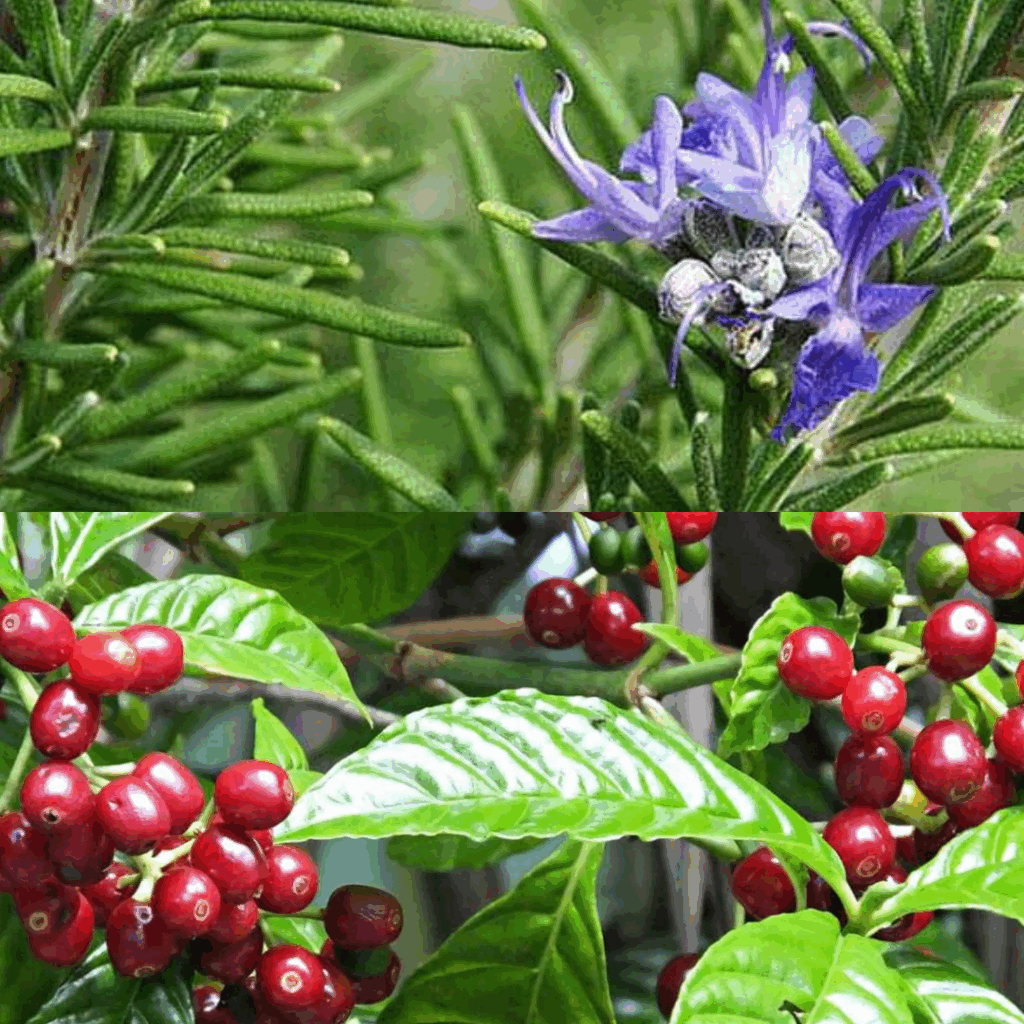Preservatives play a crucial role in extending the shelf life and ensuring the safety of pharmaceuticals, cosmetics, and food products. However, synthetic preservatives often raise safety concerns, including skin irritation, endocrine disruption, and microbiome alteration. As consumer demand for sustainable and skin-friendly alternatives grows, the spotlight has turned toward natural preservatives that also offer added benefits such as antioxidant activity.
This study explores two promising candidates—rosemary (Rosmarinus officinalis) and coffee by-products (Coffea arabica and Coffea canephora). Rosemary is already recognized for its antimicrobial efficacy, largely due to carnosic and rosmarinic acids, and is widely used in the food industry. Meanwhile, coffee production generates large amounts of by-products that are rich in phenolic compounds such as chlorogenic acid and caffeine, with notable antimicrobial potential. Repurposing these by-products not only provides a green alternative but also addresses environmental concerns. This study aims to evaluate the antimicrobial, antioxidant, and cytostatic properties of coffee and rosemary extracts and to assess their suitability as combined preservative agents in topical formulations.
Methods
Extracts were prepared from dried rosemary leaves and coffee by-products using different techniques—maceration and ultrasonic-assisted extraction with varying concentrations of ethanol and water. The total phenolic and flavonoid contents were quantified spectrophotometrically. Antioxidant activity was measured via DPPH and FRAP assays. Antimicrobial activity was tested using Minimum Inhibitory Concentration (MIC) values against Escherichia coli, Staphylococcus aureus, Pseudomonas aeruginosa, and Candida albicans. The potential synergy between extracts was evaluated using the checkerboard method. The impact on cell proliferation was tested using the HaCaT human keratinocyte cell line. The most effective extract combination was incorporated into an oil-in-water emulsion for a challenge test and stability analysis.
Key Findings
- Coffee Extracts: Coffea arabica (CA) and Coffea canephora (CR) exhibited total phenolic content ranging from 43.53 to 55.14 mg GAE/g, with CA showing the highest flavonoid content (2.32 mg QE/g). CA inhibited all tested bacteria with MICs of 12.5–25 mg/mL but was ineffective against C. albicans. Both extracts showed no cytotoxicity on human keratinocytes, indicating safety for topical use.
- Rosemary Extracts: Rosemary extracts had significantly higher phenolic content (58.31–158.01 mg GAE/g) and were active against all microbes tested, including potent antifungal activity (MIC: 0.08–2.5 mg/mL). However, some rosemary extracts mildly inhibited keratinocyte proliferation at higher concentrations.
- Synergistic Action: A combination of CA and rosemary extract (AU70) demonstrated synergistic antimicrobial effects against S. aureus and P. aeruginosa. No synergy was observed against E. coli, and testing was not feasible for C. albicans due to CA’s ineffectiveness alone.
- Emulsion Stability: An oil-in-water cream with 1.25% CA and 0.2% AU70 passed challenge tests for bacterial pathogens. However, it failed to meet criteria for yeast inhibition. The formulation turned slightly brown and experienced a pH drop to 4.0, while the texture became more cohesive and less spreadable—affecting its sensory profile.
- Antioxidant Capacity: All extracts showed antioxidant properties, with CR and AU70 performing the best in their respective groups.
This study highlights the potential of combining rosemary and coffee extracts as sustainable, multifunctional preservatives for topical skincare products. Together, they exhibited strong antibacterial synergy, particularly against S. aureus and P. aeruginosa, and contributed antioxidant benefits. Their use not only supports natural preservation but also promotes circular economy principles by valorizing agricultural waste like coffee by-products.
While the formulation met antibacterial safety standards, further work is needed to enhance antifungal performance. Adjustments such as pH optimization or adding targeted antifungal agents could improve its spectrum of activity. Additionally, further studies on skin penetration, irritation, and identification of key bioactives (using LC-MS or HPLC) are essential for clinical application.
Beyond their preservative role, the weak cytostatic effect of rosemary on keratinocytes opens the door for treating skin conditions like actinic keratosis or early-stage skin cancer. This research lays the foundation for greener, safer alternatives in skincare—meeting modern consumer expectations without compromising performance.
Link to the study: https://www.mdpi.com/2079-9284/12/4/147


